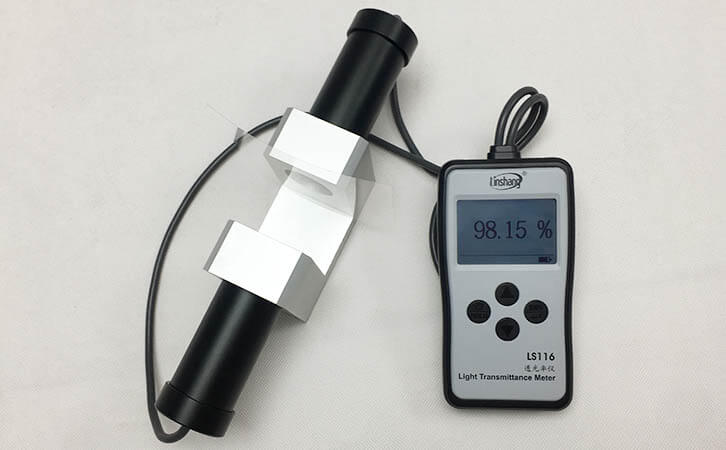Measure the Light Transmittance of Greenhouse Films with Light Transmittance Meter
Greenhouse film is a plastic film dedicated to agricultural construction. Greenhouse film materials commonly used in China include polyvinyl chloride (PVC) shed film, polyethylene (PE) shed film, ethylene-vinyl acetate copolymer shed film and light-adjustable agricultural films. Greenhouse film plays an extremely important role in the growth of crops, increasing income and yield. Therefore, there are certain requirements for the light transmittance, heat preservation, tensile resistance and aging resistance. The greenhouse film properties are better than ordinary agricultural films.
1. The transmittance of the greenhouse film and the affecting factors
The light transmittance value of the new greenhouse film is measured with a light transmittance meter to reach 80% -90%. During use, the light transmittance will become lower and lower due to dust pollution, water droplet absorption and film aging. It will generally decrease by 10-30% because of poor north-south sunshine. The irradiance between the north and south sides of the greenhouse extended from east to west will differ by 10-20%. The new film will reduce the light transmittance by 14.5% due to dust pollution after two days of use, 25% after 10 days and less than 28% after half a month. When the pollution in the shed is serious, the amount of light received in the shed is only 7%. We know that ultraviolet rays are present in sunlight and ultraviolet rays can age films. After the film is aged, the light transmittance will decrease to 20-40% and even lose its use value.
For plants to perform photosynthesis, light and heat are vital to plants. The main source of heat in sunlight comes from infrared. Therefore, for greenhouse films, it is generally necessary to pay attention to three kinds of light transmittance, that is, visible light, infrared, and ultraviolet. Some greenhouse films may appear translucent if they are relatively thick.
2.Measure the light transmittance of the film with LS116 light transmittance meter
If you only need to measure the light transmittance of transparent greenhouse film, it is recommended to use Linshang LS116 light transmittance meter. The light source of this light transmittance meter is the full wavelength of 380nm-760nm, which meets the CIE photopic luminosity function. The instrument uses the parallel optical path design and can also measure tested material of large thickness. The measurement accuracy can reach within ± 1%, which ensures that it can pass the test of the Chinese National Metrology Institute.
3.Measure the light transmittance of thick film with LS117 light transmittance meter
For thicker greenhouse films that are opalescent or translucent, it is recommended to use Linshang LS117 light transmittance meter. This light transmittance meter is an instrument made with the principle of diffuse transmission.It can not only measure the light transmittance of opalescent materials, films, X-ray films, inks, matte materials, etc., but also measure the optical density . This instrument has an integrating sphere effect, which effectively guarantees the measurement accuracy.
4. Use LS163 window tint meter to measure the transmittance of visible light and IR, UV rejection rate
For testing of visible light transmittance, ultraviolet, infrared transmittance or rejection rate of greenhouse films, it is recommended to use Linshang LS163 window tint meter. This instrument can measure visible light from 380nm-760nm, ultraviolet light with a peak wavelength of 365nm and infrared light with a peak wavelength of 940nm. The instrument can set the transmission rate or rejection rate of ultraviolet and infrared.
- Linshang Insulated Glass Unit Measuring Tools
- Spectacle lens anti-blue light detection---blue-violet light transmittance meter
- Measurement of Optical Density
- Difference of LS116 Transmission & LS117 OD Meter
- Difference between LS116 and LS117 Light Transmittance Meter
- What’s the Difference Between Point Light and Parallel Light Transmittance Meter
